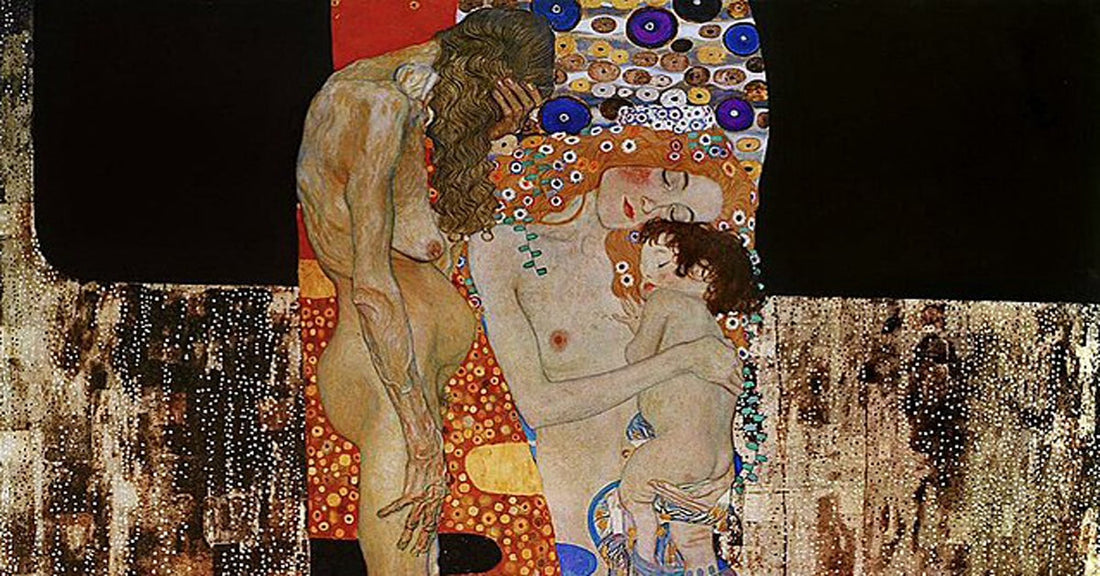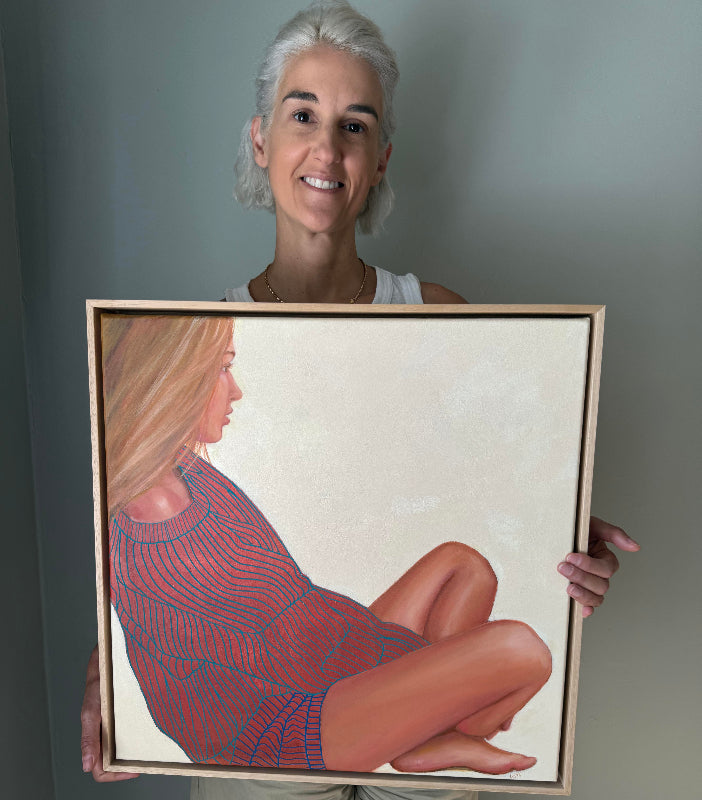
Art Review: Klimt's Three Ages of Woman
Gustav Klimt (1862-1918) depicted “Three Ages of Woman” in 1905 in his famous painting of a small child, a young woman and an elderly lady. The painting says more about the cycle of life than the life of a woman.
Klimt has placed a wreath of flowers on the heads of the young woman and the child to represent spring and the creation of life and reproduction. The elderly woman stands separately with her head in her hands, looking worn and forlorn. She represents death. It's as if, after motherhood, all that is left is death. Klimt has reduced a woman's life to the years before, during and after the reproductive stage of their life. However, women's lives are more than just the creation of offspring.
The traditional role of women as mothers has now expanded into a more complex role where motherhood is just one of many choices available for women. Therefore, Klimt’s three-part cycle is much too simplistic to be applied to the life of a modern-day woman. We need to dig a little deeper to understand the many phases in a woman's life.
Kelly Wensley may have the answer. Her article “The Four Life Phases of a Woman” (2013), defines the stages as: Playful Child, Sexy Seductress, Good Mother and Wise Older Woman (WOW). The Playful Child is easily comprehended and is readily identifiable in Klimt's painting; however, we can look at the other three stages in more detail.
Wenley's Sexy Seductress is described as “irresistible to anyone who has the pleasure to know a young woman. They command the attention of everyone around them. Men are drawn to them.” In reality, young women do not exist merely for the gaze of men. Nonetheless, the point is that Sexy Seductress represents a woman who is free to explore her sexuality on her own terms.
Many of the women Klimt painted exude sexuality, including the mother in his Three Ages of Woman. Although she is a mother, she does not look tired and haggard from sleepless nights and endless breastfeeding. She still radiates a certain amount of sex appeal. Here Klimt is presenting us with an idealized, romatistised version of motherhood, which is often far from reality.
The stereotypical Good Mother, by comparison, is more restricted, if only by time and the demands of motherhood. Wensley very aptly notes:
Attention is taken off ourselves and transferred to our family. The indulgent days of caring only for ourselves are rarely available…We now view taking time for ourselves as selfish. We also have trouble reconciling the sexuality of the Sexy Seductress with the Good Mother, somehow making her less good.
The mother (saint) verses slut stereotypes that still pervail in modern society make it hard for many women to reconcile their former sexy self with the change that comes with motherhood. Not only are there physical changes to our body, but there are emotional changes that impact the way we view ourselves and the world around us.
Wensley’s final phase is the Wise Older Woman (WOW) in which “we’ve overcome our obstacles, grown stronger, feel more appreciation and give back our experience, the resulting gifts and hard-earned knowledge to the world.” This fits in with the stereotypical memopausal woman who stops giving a fuck about what other people think of her. It's a time of empowerment and freedom for middle-aged women, which does not align with Klimt's decrepit old woman who is on the verge of death and is a burden on society with nothing left to give.
One thing that Wensley’s article does not consider is that not all women become mothers or carers. Many prefer to focus on their career or spend their time in some other manner. Rather than merely skipping this stage, I suggest there still exists a place between sexual empowerment and worldly wisdom.
Similar to the Good Mother, this woman has less freedom than the Sexual Seductress. Upon entering this stage of life, she realised the difficult tightrope she must walk in order to succeed. To be taken seriously in a male-dominated world, she becomes attractive but not too sexy, intelligent but not condescending, nice but not easy, and assertive but not aggressive. She must be patient, polite, well-groomed and deferential.
Such expectations are not dissimilar to those placed on any modern-day mother: she must be serene and her children well-behaved. The compliance of her children must be achieved without any yelling, screaming or any other behaviour that is unbecoming for a woman. Moreover, to be considered a successful maternal figure, she should look manicured and fashionable at all times.
So, regardless of motherhood, most women will transform from the young, naïve and ambitious young woman, full of hope and ideals, into an experienced, knowledgeable, mature adult who knows the reality of existing in a patriarchal society. Like the young soldier who returns from war with his eyes open and his spirit broken, the WOW sees the world for what it is, warts and all.
Some may refer to this age as the Bitter Older Woman (BOW), who is frequently depicted in fairy tales as the evil stepmother, jealous of her younger rival. But the only BOW I know are jealous only of their male peers for whom the glass ceiling does not exist. Mostly, however, the all-knowing older woman is like the fairy Godmother: helpful, insightful, resourceful and giving.
Below: Cute as a Button painting, by Leah Mariani
After expanding Klimt's reductive three ages of woman into a more nuanced and inclusive model, we arrive at five distinct phases in a modern woman’s life: Playful Child, Sexy Seductress, Womanhood, Wise Older Woman, and Elderly Lady. These stages—some hormonal, others societal—reflect the complexity and richness of female experience far more accurately than Klimt’s idealised cycle of fertility and decline.
Klimt’s painting may have frozen women’s lives in a narrow narrative of youth, motherhood, and obsolescence, but today we know that a woman’s story doesn’t end with child-rearing—or begin with her sexual appeal. Women are not defined by a single role or purpose. Instead, they evolve, adapt, and transform through phases that intertwine strength, sexuality, sacrifice, insight, and renewal.
So let’s raise our glasses to the modern-day woman in all her stages—whether she’s at the beginning of her story or somewhere in the thick of it. Unlike Klimt’s solitary figures, the real power of womanhood lies not in its limitations, but in its constant becoming.







